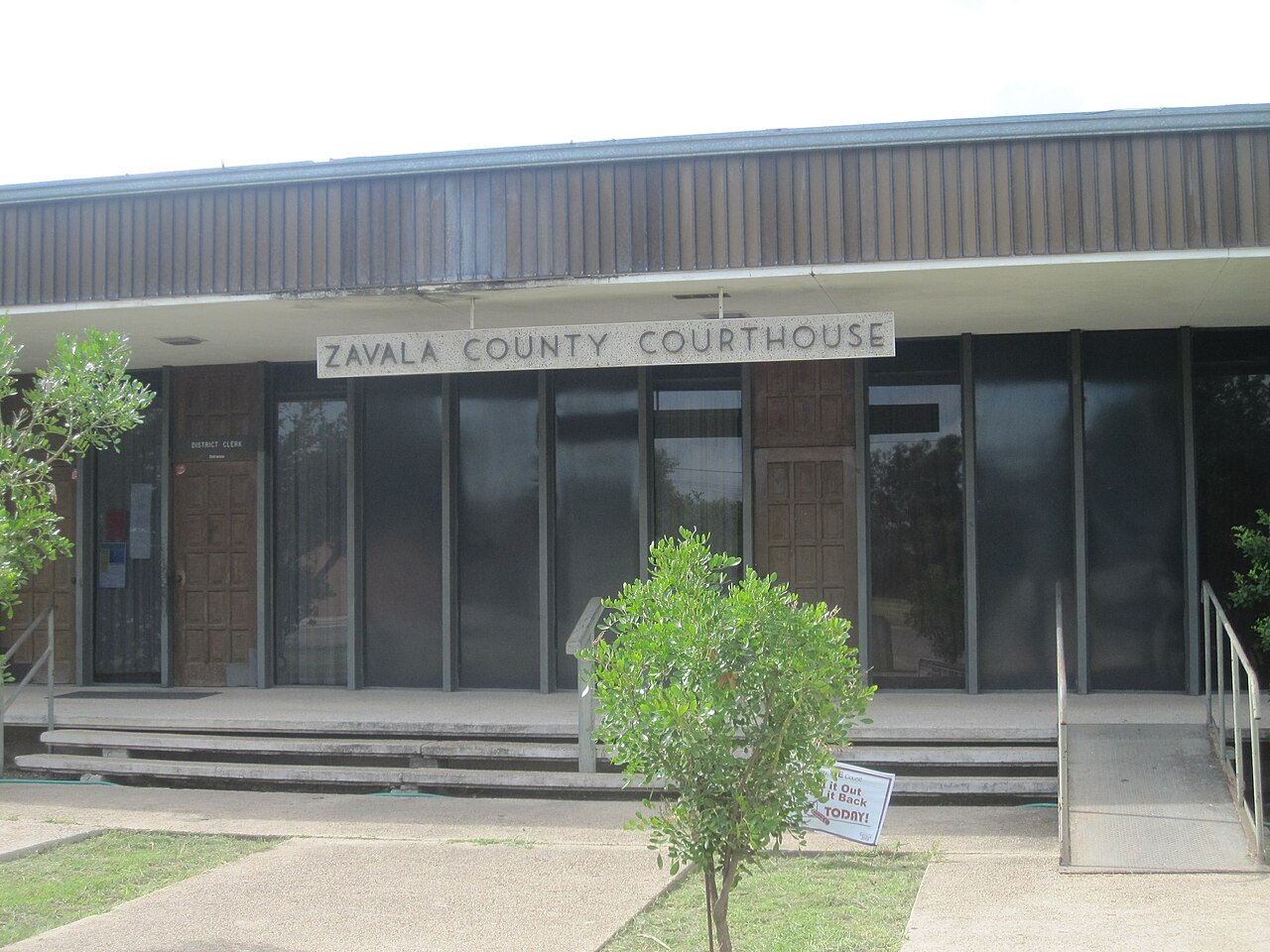Texas Writs of Garnishment to Collect Judgment Liens from Culberson County, Texas
At Busby & Associates, we provide comprehensive legal services for defending, collecting, and enforcing judgments. While our main focus is on garnishment of bank accounts and financial institutions, we also offer legal assistance for consumer bankruptcy, family law, and divorce matters. Furthermore, we can assist both obligors and obligees with child support lien collections and defense, as well as domestication of foreign child support liens in Culberson County, Texas. If you are a judgment creditor who is struggling to collect payment from a debtor in Culberson County, Texas, contact us, and we will help you formulate a strategy to collect the judgment.
Texas Judgment liens in Culberson County
In Culberson County, a properly recorded and indexed abstract of judgment can create a lien on all nonexempt real property owned by a judgment debtor. The abstract must be filed in every county where the debtor has property. The lien remains valid for ten years from the date of recordation and indexing, unless the judgment becomes dormant. A lien can only be established on final judgments, not interlocutory ones. However, if a judgment is being appealed or a supersedeas bond has been filed, an abstract of judgment can still be filed. If a creditor establishes a lien before the appeal, it remains valid even if the judgment is affirmed. These rules only apply to Texas state trial court judgments. To establish a lien through the abstract of a judgment from another state or foreign country, the judgment must first be domesticated in Texas before an abstract can be filed.
Texas Abstract of Judgment
Abstracting a judgment in Texas is subject to specific regulations that must be adhered to. In general, the abstract can be prepared by the judge, justice of the peace, clerk of the court, judgment creditor, agent, attorney, or assignee for judgments rendered in most courts, except for small claims and justice courts where the judgment creditor is not permitted to prepare their own abstract. It should be noted that abstracts of federal court judgments require certification from the clerk of the court. To abstract your judgment lien in Culberson County, Texas, you can go to the County Clerk’s office at 300 La Caverna St, Van Horn, Texas 79855.
Contents
In Texas, an abstract of judgment must meet certain requirements to be considered legally valid. This includes including the names of the plaintiff and defendant, the defendant’s birthdate (if available), the defendant’s driver’s license and social security numbers (if available), the suit number, the defendant’s address or citation information, the date the judgment was rendered, the amount of the judgment and balance due, any child support arrearage, and the interest rate. The abstract must also include the mailing address for each plaintiff or judgment creditor and be verified by the creditor’s attorney. A penalty filing fee will be imposed if the mailing address is missing. Unverified declarations are not allowed.
Recordation of Judgment Liens Abstract
The abstract of judgment should be recorded in Culberson County if the debtor has real property there to ensure its validity. The Culberson County clerk receives the abstract and records it in the county’s real property records, specifying the date and time of recording. Furthermore, the clerk must enter the abstract in the alphabetical index to the real property records, displaying the names of both the plaintiff and defendant and the page number where the abstract is recorded.
Abstracts of Domesticated Judgment Liens.
The Uniform Enforcement of Foreign Judgments Act and the Uniform Foreign-Country Money Judgments Recognition Act provide foreign judgments with enforceability comparable to local judgments. In Texas, the foreign judgment holder must fulfill the lien requirements to domesticate the judgment.
Property To Which Lien Attaches Non-Exempt Real Property
Culberson County, the county of recordation, is where the judgment lien is enforced on all nonexempt real property owned by the defendant.
Keeping the Judgment and Judgment Lien Alive
1. Non-governmental Judgments
The lien resulting from a judgment remains in effect for 10 years from the date it was recorded and indexed, except if the judgment becomes dormant. To prevent the lien from ceasing, it is necessary to (1) ensure the judgment stays active and (2) obtain and record a new abstract of judgment. A judgment becomes dormant when no writ of execution is issued within 10 years of its issuance, but it can be revived by a scire facias or an action of debt filed no later than two years after it becomes dormant.
2. State or State Agency Judgments.
A renewed abstract of judgment can extend the life of a lien created by a properly filed abstract of judgment for another 20 years. State or state agency judgments also remain enforceable without becoming dormant. Additionally, a valid abstract of judgment can establish a lien that lasts for 20 years from the date of filing.
3. Political Subdivisions.
Dormancy statutes may cause judgments of political subdivisions to go dormant, but the political subdivision can revive the judgment at any time using the revival statute, Civ. Prac. & Rem. Code § 31.006. Thus, the political subdivision is not precluded by the statute of limitations from reviving the judgment beyond the two-year dormancy period.
4. Child Support Judgments.
The Civ. Prac. & Rem. Code’s Subsection (c) to § 34.001 makes an exception for child support judgments from the dormancy statute and applies to all such judgments, regardless of when they were rendered.
Property Subject to and Exempt from Execution.
1. Property Subject to Execution.
The property of the judgment debtor is subject to seizure by execution if it is not exempted by the constitution, statute, or any other legal rule. Generally, the following types of property are not exempt: a. Cash on hand or in checking or savings accounts; b. Pleasure boats and their motors and trailers; c. Collections such as stamps or coins; d. Investments like stocks, bonds, or notes; e. f. Airplanes. There is no exempt property for corporations.
2. Property Exempt from Execution.
Regardless of whether the debtor is a family or a single adult, the following types of property are not subject to execution: a) the homestead; b) personal property of various categories specified by statute, up to an aggregate fair market value of $100,000.00 for a family or $50,000.00 for a single adult without family connections; c) current wages for personal service (excluding child support payments) and unpaid commissions for personal services, not exceeding 25% of the $50,000/$100,000 aggregate limitations; d) professionally prescribed health aids; e) worker’s compensation payments; f) cemetery lots held for sepulcher purposes; g) property sold, mortgaged, or conveyed in trust by the judgment debtor, if the purchaser, mortgagee, or trustee can identify other property of the debtor sufficient to satisfy the execution; h) assets in the hands of the trustee of a spendthrift trust for the benefit of the judgment debtor; i) certain insurance benefits; j) specific savings plans, including retirement benefits and health savings plans; k) college savings plans; l) consigned artwork that meets the legal criteria.
 WRITS OF GARNISHMENT.
WRITS OF GARNISHMENT.
If a judgment creditor suspects that a third party owes any debts to the judgment debtor, they can use the post-judgment garnishment procedure to investigate the matter. If any debts are found, the creditor (garnishor) can obtain a garnishment judgment, obliging the third party (garnishee) to pay funds to the garnishor instead of the debtor.
Requirements to Issue
To use garnishment after judgment, certain requirements must be satisfied. Firstly, the creditor must possess a valid and subsisting judgment against the debtor, with the judgment being considered final and subsisting from the date of rendition. Secondly, the debtor must not have filed an approved supersedeas bond to prevent execution on the judgment. Finally, the creditor must swear that, as far as they know, the debtor does not possess enough property in Texas that can be executed to fulfill the judgment.
Procedure for Securing Issuance Jurisdiction and parties
A post-judgment garnishment action is an independent legal suit from the main case it is meant to enforce. As an ancillary lawsuit, the third-party garnishee must be named as the defendant. It should be filed in the same court that delivered the judgment for collection, but under a different cause number.
Service of the writ of garnishment/notice to judgment debtor.
The garnishment action is initiated by serving the writ of garnishment on the garnishee, and the judgment defendant is not required to participate. However, the defendant must receive a copy of the writ, application, affidavits, and court orders as soon as possible after the garnishee has been served. The copy of the writ served on the defendant must include the contents of the writ in bold 12-point typeface and in a manner that is easily comprehensible for a reasonably attentive person. Failure to provide the judgment debtor with property notice invalidates any judgment, except for one that dissolves the writ.
Banks as Garnishees for Writs of Garnishment
To deliver garnishment writs to garnishee banks, the address designated as the registered agent of the financial institution in its registration statement under Section 201.102 or 201.103 of the Finance Code must be used. Out-of-state financial institutions must comply with the state’s foreign corporation laws, including appointing an agent for process under Section 201.102, by filing an application for registration with the Secretary of State. Texas financial institutions may appoint an agent for process by submitting a statement to the Secretary of State under Section 201.103.
Officer’s Return.
Making a return that adheres to the citation rules is the duty of the officer executing a writ of garnishment. According to Tex. R. Civ. P. 663, the judgment creditor should inspect the return before seeking a garnishment judgment, especially if it is a default judgment. Returns in garnishment proceedings are governed by the same regulations as citations in general. Courts have invalidated returns that do not indicate the method and location of service on a corporate garnishee.
Forms for the form and Practical Procedure
Upon discovering a bank account or other debt owed by the judgment debtor that can be garnished and determining that it is cost-effective to do so, you must file an Application for Garnishment, along with an affidavit signed by the judgment creditor’s attorney. The affidavit should contain essential information such as the original suit and judgment details, the garnishee’s name and address for service, and any available account names and numbers.
Do you need help collecting a Texas judgment? Busby and Associates could potentially help you do so on a contingency basis. For judgments from other states with the judgment debtor in Texas, they will assess it on a case-by-case basis and may require a retainer. If the judgment debtor and/or judgment is in Culberson County, they can assist you in garnishing a bank account or financial institution.













